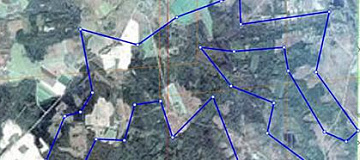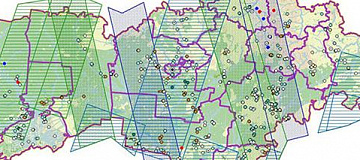
You can order from us
Prices for services
| Activities | Free / Cost per Unit of Measurement |
|---|---|
| Consultation | Free |
| Image Selection | Free |
| Image Ordering | From $300 to $600 USD per image (the number of images depends on the area of the territory) |
| Technical Specialists' Work | From 70,000 rubles (calculated individually) |
| Report Compilation | From 50,000 rubles (calculated individually) |
| TOTAL COST | From 120,000 rubles (calculated individually)* |
*The cost estimate depends on the area of the forests and plantations and is calculated individually for each client's objectives with consideration of the Technical Task (TT).
The cost of execution is calculated on an individual basis, taking into account a specific of task.
After receiving the task description, we calculate the cost and send you a commercial offer.
Period of execution
Harmonization of issues and applicable photos: from 1 to 15 days*.Contract conclusion: from 1 to 3 days.
Receipt of images: from 1 to 5 days **.
Photo processing: from 10 to 35 days.
Space image interpretation, creation of training sample polygons for space photo classification: from 1 to 20 days.
Vectorization of the obtained classification: from 1 to 5 days **.
Mapping of the territory with forest damage and degradation: from 1 to 5 days **.
Report writing: from 2 to 15 days.
TOTAL TIME: from 20 days **.
* working days
** from the date of receipt of 100% advance payment, when ordering a new survey the terms will increase
Lead time from 20 days. Depending on the area of forest pathology monitoring, calculated individually for each customer and taking into account the ToR.
How to place an order:
Need for consultation?
Fill the form and we will contact you
Stages of service provision
The result of the provision of services
Geo Innother provides a report on the forest pathologic condition, presentation materials, thematic maps of forest degradation, georeferenced Tiff (Geo TIFF), and vector layers of identified objects in Mid/Mif format. All necessary results are delivered on electronic media or through the Internet via FTP servers, and textual materials are also duplicated in printed form.
In addition, based on the research conducted by Geo Innother specialists, it is possible to perform a forensic examination of the forest pathologic condition of the territory.
Requirements for Source Information
Exact geographical coordinates of the forest examination object in the required coordinate system (Geo Innother specialists will clarify the information provided in any convenient form by the Client).
Images that meet the criteria of time of imaging, spatial resolution, and the presence of the necessary spectral channels, with initial georeferencing by RPC (Rational Polynomial Coefficients).
The selection of satellite images for the interpretation of specified images (spatial resolution, mode, spectral range, frequency of space imaging, and other characteristics of satellite images) is carried out based on the tasks of remote observation of the forest pathologic condition.
For remote observation of the forest pathologic condition using satellite imagery, photo-spatial resolution from 1 to 30 meters inclusive should be used.
When using multispectral satellite images with spatial resolution from 1 to 3 meters inclusive, changes in the forest pathologic condition must be detected in forest areas of 0.1 hectares and more (The Procedure for Forest Pathologic Monitoring...).
When using multispectral aerial satellite images with spatial resolution from 3 to 10 meters inclusive, changes in the sanitary and forest pathologic condition must be detected in forest areas of 1.0 hectares and more (The Procedure for Forest Pathologic Monitoring...).
If it is not possible to provide the specified information, please provide details on the intended use of remote sensing materials, and Geo Innother specialists will analyze the request and propose the optimal solution to the problem.
Related services











Completed projects

Customers
FAQ
- Position of the object of interest (coordinates, name of district, region, shp-file, etc.);
- period requirements (period for which archive data can be used or a new survey is required);
- whether forest pathology monitoring has been conducted in the area.
Licenses
Warranty
The main regulatory legal documents that determine the tasks and procedures for forest pathologic monitoring are as follows:
- Article 60.5 of the Forest Code of the Russian Federation - State Forest health monitoring
- Order of the Ministry of Natural Resources of Russia dated 05.04.2017 No. 156 "On the Approval of the Procedure for State Forest Pathologic Monitoring" (Registered with the Ministry of Justice of Russia on 30.06.2017 No. 47257).
- Government Decree of 09.12.2020 No. 2047 "On the Approval of Sanitary Safety Rules in Forests".
- Order of the Ministry of Natural Resources and Environment of the Russian Federation dated 09.11.2020 No. 912 "On the Approval of the Rules for Measures to Prevent the Spread of Harmful Organisms".
- Order of the Ministry of Natural Resources and Environment of the Russian Federation dated 09.11.2020 No. 910 "On the Approval of the Procedure for Conducting Forest Pathologic Surveys and the Form of the Forest Pathologic Survey Report".
We guarantee 100% quality of service. By cooperating with Geo Innother specialists, you eliminate risks and losses!
The availability of qualified personnel with extensive experience and specialized software allows us to ensure timely and high-quality execution!





















































